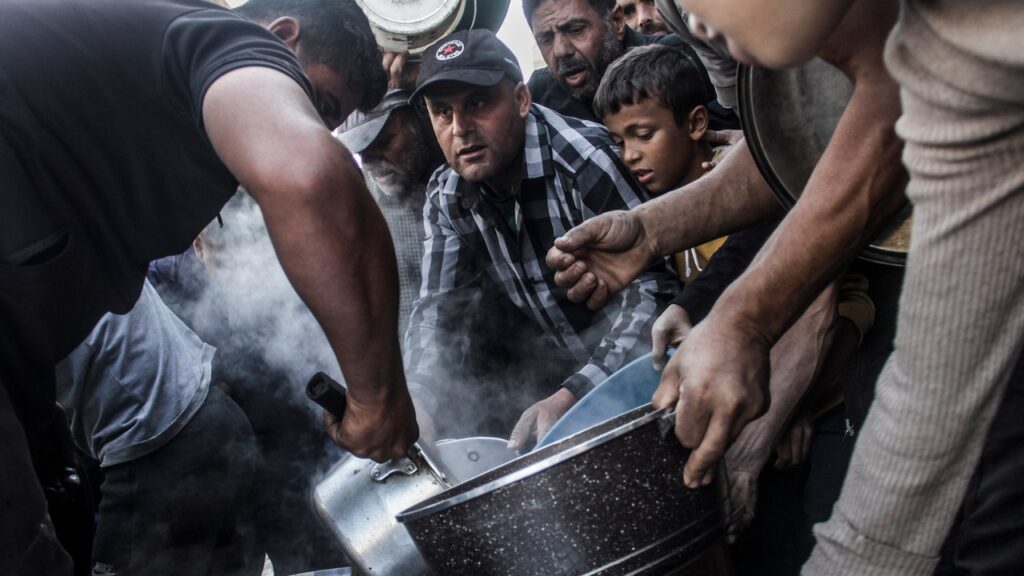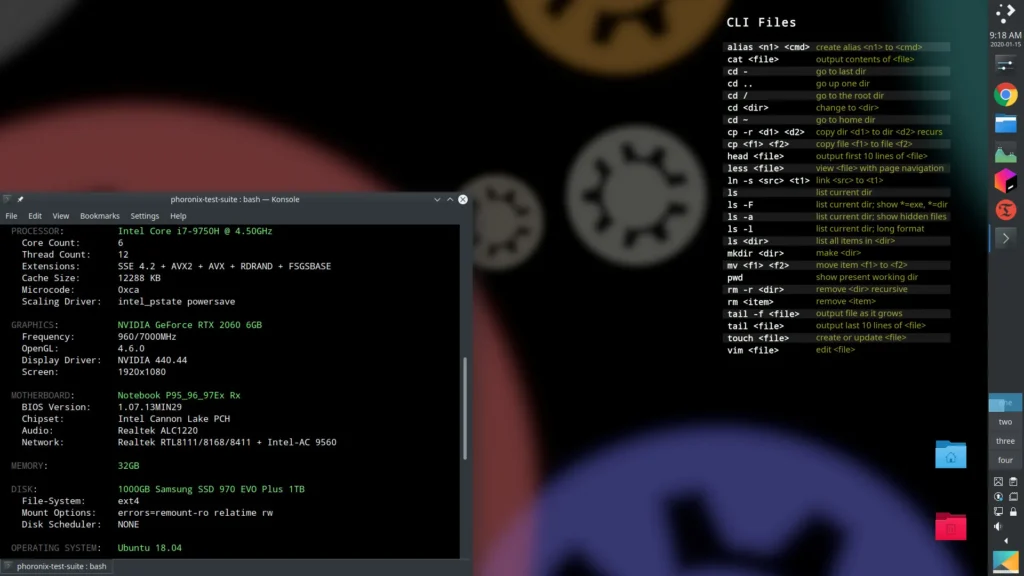Last week, a United Nations-backed group, the Integrated Food Security Phase Classification’s Famine Review Committee, warned that parts of the Gaza Strip were at risk of “imminent” famine. Since the war began, more than a year ago, it has been difficult to get aid into the territory. This summer, there had been slight progress in increasing the amount of food and medicine arriving, but, in August, those efforts began to stall as Israel stymied delivery operations. Aid organizations and the United Nations have made clear that the humanitarian emergency is especially acute in Gaza’s north. The situation has worsened to such a degree that the Biden Administration, which has continued supplying arms to Israel despite the war resulting in more than forty-three thousand deaths, has once again said that future arms shipments might be reduced unless access to humanitarian aid improves. (A letter signed in mid-October by Secretary of State Antony Blinken and Secretary of Defense Lloyd Austin gave Israel thirty days to increase the flow of aid. On Tuesday, it missed the deadline, and the Biden Administration said that it wouldn’t follow through on its threat to cut off military support.) Late last month, the Israeli government passed a pair of laws that banned the United Nations Relief and Works Agency (UNRWA) from operating in Israel, starting in late January. (Israel’s government has accused UNRWA, which had thirteen thousand mainly Palestinian employees working in Gaza prior to October 7th, of being “a terrorist organization,” infiltrated with hundreds of members of Hamas, but has provided little evidence to support that claim; a U.N. spokesperson acknowledged to the Times that as many as nine employees likely did take part in the October 7th attacks.)
I recently spoke by phone with Louise Wateridge, a senior emergency officer with UNRWA who has been stationed in Gaza for the past six months. During our conversation, which has been edited for length and clarity, we discussed why the humanitarian situation has recently become even more dire, what the ban on UNRWA may mean for Palestinians, and why the Israeli government provides so little communication about its decision-making.
For people who have some awareness of what’s happening in Gaza, but have maybe not been following the news as much during the past few weeks, for obvious reasons, can you give some sense of how things are in Gaza right now, and especially in the north?
Certainly this past month in the north has been one of the worst stages of the war that we’ve seen in the past thirteen months. Parts of northern Gaza have been besieged, and what I mean by that is for an entire month no food was permitted to enter these areas. All of our requests for humanitarian aid were denied by Israeli authorities. The water wells that we run in these areas have either been bombed, or they’ve run out of fuel to operate, or the staff simply had to flee for their lives, and therefore they aren’t on the ground to access them.
So we largely haven’t had access to these besieged areas, but what we’re hearing from colleagues on the ground who have stayed is that there are bodies just lying on the street. We are aware that the three hospitals in those areas are completely decimated. Some of the hospitals have been hit in strikes. There are reports that some of the doctors have been detained. We are aware that there’s only one surgeon now left in the northern area of Gaza. And, really, we are just hearing people are left to fend and survive by themselves. The scenes that our colleagues describe are beyond apocalyptic, with residential buildings, hospitals, schools, every kind of structure destroyed, damaged, bombed, and a lot of people are just trapped in their homes, just sheltering. They’re running out of food, and they’re running out of water. [The Coordinator of Government Activities in the Territories, the Israeli agency that oversees humanitarian initiatives in Gaza, told The New Yorker that “during recent weeks a dedicated humanitarian response was developed for the northern Gaza Strip in coordination with the United Nations” and that “proactive measures are being taken to increase the quantity of aid.”]
When you talk about northern Gaza, what area are you talking about specifically, and how many people do you think are still there?
There’s a line across from the middle of Gaza called the Wadi Gaza line, and north of that there’s an estimated four hundred thousand people. The area that is currently most besieged is the very top of the Gaza Strip. It’s north of Gaza City. It covers Jabalia, Beit Lahia, and Beit Hanoun. And it’s very difficult for us to get an estimate of how many people are there. At the moment, we think it’s around seventy thousand. We’ve had reports of around a hundred thousand people who have fled this area and relocated to Gaza City, since October of this year. These numbers are estimates. The people that we have on the ground tracking the displacement are themselves fleeing. They are caught up in this displacement and besiegement. But that’s the kind of volume of people that we’re talking about.
So, when I say the besieged north, that refers to Jabalia, Beit Hanoun, and Beit Lahia. They’re the areas that we’ve had no access to since October 6th [of this year] and for the better part of the past month. And northern Gaza, which is everything north of the Wadi Gaza line, includes Gaza City, Beach Camp, and other areas. This is where a lot of the population has been forced. They’re now sheltering there, but even a couple of days ago, in Gaza City, there were two strikes on schools where people were fleeing to. So you have this really unimaginable situation where people are being displaced for the fourteenth, fifteenth time, telling us they’re going to Gaza City, and then they’re being bombed there. That’s the reality that we have in the northern part of Gaza at the moment.
Explanations from the Israeli government about what is going on seem to shift. Sometimes they say that everything’s fine; sometimes they say that security, or the Jewish holidays, slow things down; sometimes they say that they’re worried about dual-use items, which are items they claim could be used by Hamas to inflict damage on Israeli soldiers or Israeli civilians. What is the explanation that you’ve been given for why the aid, especially in the north, has slowed so much in the past month or so?
We often just receive denials. We put in requests, for example, to deliver aid to the north every day and the communication we receive is a denial of the mission. And that’s about the extent of the knowledge we have. It’s not commonplace for us to receive more information than that. There is not enough aid, which has been, to be honest, the case every day for the past thirteen months. There have been times that there’s been more aid let in. But we are not often given any kind of explanation as to why.
Of course, we are very aware from what our colleagues tell us, and from what we see and hear—the military operations are ongoing. We’re aware that they have intensified significantly. But we simply receive a denial to have access. The Gaza Strip right now is cut into different areas, and there are various checkpoints. We certainly don’t have any freedom of movement. Everything has to be coördinated. So when it comes to delivering aid, it’s not so simple as getting aid in a truck and driving it to people. Everything we do has to be coördinated with the Israeli authorities. But we simply receive a denial of movement.
Israel formally ended its decades-long coöperation agreement with UNRWA. What does that in effect mean?
You have a thirteen-month war and the entire population here have known UNRWA for seventy or seventy-five years. Their families have worked for UNRWA and they’ve gone to UNRWA schools. Replacing UNRWA now, or preventing it from working in the community—people are exhausted and have lost a lot of faith in the international community because of the daily occurrences on the ground here. This will be absolutely detrimental.
It really is hard to express what a big footprint UNRWA has. I worked for them for years before the war, and knew Gaza before this war. You would come to the Gaza Strip and see UNRWA on every other street. There would be a school. There’s distribution centers, there’s health centers. And it’s quite an iconic image. There are these white buildings with this U.N. blue outline, and they really are just part of the community and part of the footprint here. It is such a key part of the economic situation in the Gaza Strip. It offers a lot of employment to people here where there aren’t many other opportunities.
A lot of the buildings now, of course, have been destroyed. Around eighty-five per cent of our facilities have been damaged or destroyed.
When Israel says it’s ceasing coöperation with UNRWA, what does that actually mean? Can you describe what the relationship between UNRWA and the Israelis has been like, and how it’s going to change now?
We are still very much waiting to see what this means. Since the bill came through, we have not had any further information as to what will change and how things will be affected. But what I can tell you now is that every movement that we do here is coördinated with Israeli authorities. If we don’t have access to that coördination, any safety that is left for our staff and our operations will be compromised. We cannot run a humanitarian response without this coördination system. Like I said, every mission we do, every truck we bring in, it is coördinated with Israeli authorities. So if you take away that coördination, we will be paralyzed.
Do these bills mean that there’s literally no communication, and that UNRWA is not going to get another truck of aid through? Or is there still some sort of conversation happening, even if the aid is vastly insufficient?
The current situation is that the Israeli authorities, after the bill was passed at the Knesset, have allotted a ninety-day implementation period. To our best understanding, we are still in the ninety-day implementation period. When that ends, we will know more about what the next steps will be. We will know whether communication will cease between Israeli authorities and the agency. For now, it’s not clear.

